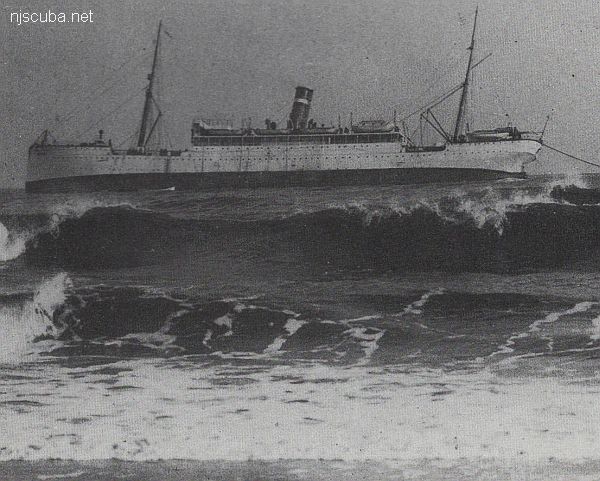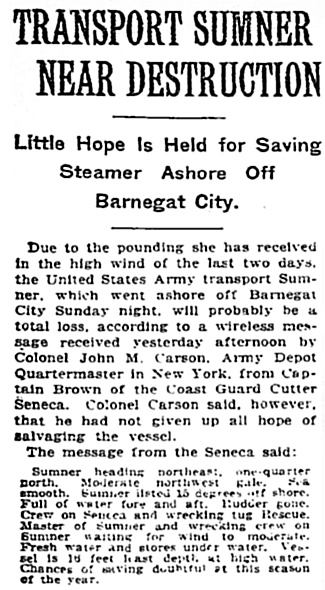Sumner

- Type:
- shipwreck, collier, converted to passenger freighter, USA
- Built:
- 1883, Germany, as Rhaetia
- Specs:
- ( 351 x 43 ft ) 3553 gross tons, 232+ passengers & crew
- Sunk:
- Tuesday December 12, 1916
ran aground - no casualties - Depth:
- 25 ft

low debris field, possibly buried, 300 yards offshore


Questions or Inquiries?
Just want to say Hello? Sign the .